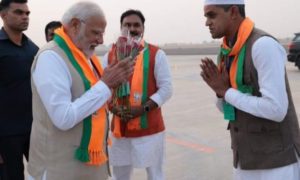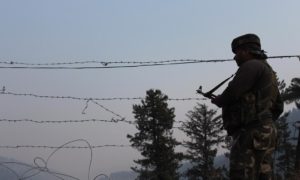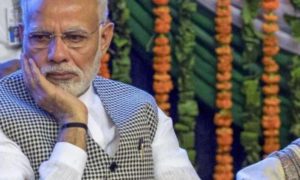‘21,558 responses received; 80% of the respondents supported simultaneous elections’
New Delhi: The High level Committee on Simultaneous Elections constituted under Ram Nath Kovind, former President of India, met the President of India, Droupadi Murmu, and submitted its report.
The report, comprising 18,626 pages, is an outcome of extensive consultations with stakeholders, experts and research work of 191 days, since its constitution on 2 September, 2023.
The other members of the Committee were Amit Shah, Minister of Home Affairs India and Minister of Cooperation, Ghulam Nabi Azad, former leader of opposition in Rajya Sabha, NK Singh, former Chairman, 15th Finance Commission, Dr. Subhash C. Kashyap, former Secretary General, Lok Sabha, Harish Salve, Senior Advocate, and Sanjay Kothari, former Chief Vigilance Commissioner. Arjun Ram Meghwal, Minister of State (Independent Charge) Ministry of Law and Justice was a Special Invitee and Dr Niten Chandra was the Secretary of the HLC.
The Committee held extensive consultations to understand the views of different stakeholders. 47 political parties submitted their views and suggestions, out of which 32 supported simultaneous elections. Many political parties had extensive discussions with the HLC on this matter.
In response to a public notice published in newspapers in all the States and Union territories, 21,558 responses were received from citizens from all over India. 80% of the respondents supported simultaneous elections. Experts on law such as four former Chief Justices of India and twelve former Chief Justices of major High Courts, four former Chief Election Commissioners of India, eight State Election Commissioners, and Chairman, Law Commission of India were invited by the Committee for interaction in person. Views of the Election Commission of India were also sought.
Apex business organizations like the CII, FICCI, ASSOCHAM and eminent economists were also consulted to present their views on the economic repercussions of asynchronous elections. They advocated the economic imperative of simultaneous elections on account of the effect of asynchronous elections on fuelling inflation and slowing down the economy.
The Committee was briefed by these bodies that intermittent elections had adverse consequences on economic growth, quality of public expenditure, educational and other outcomes, besides upsetting social harmony.
After consideration of all suggestions and viewpoints, the Committee recommends a two-step approach to lead to the simultaneous elections.
As the first step, simultaneous elections will be held for the House of the People and the State Legislative Assemblies. In the second step, elections to the Municipalities and the Panchayats will be synchronised with the House of the People and the State Legislative Assemblies in such a way that Municipalities and Panchayats elections are held within hundred days of holding elections to the House of the People and the State Legislative Assemblies.
The Committee also recommends that there should be a single electoral roll and Electoral Photo Identity Cards (EPIC) for use in elections to all the three tiers of Government.
In tune with its mandate to explore the mechanism for simultaneous elections, and keeping in view the existing framework of the Constitution, the Committee has crafted its recommendations in such a way that they are in accordance with the spirit of the Constitution of India and would require bare minimum amendments to the Constitution.
Upon all-inclusive deliberations, the Committee concludes that its recommendations will enhance transparency, inclusivity, ease and confidence of the voters. Overwhelming support for holding simultaneous elections will spur development process and social cohesion, deepen the foundations of our democratic rubric, and realise the aspirations of India.












